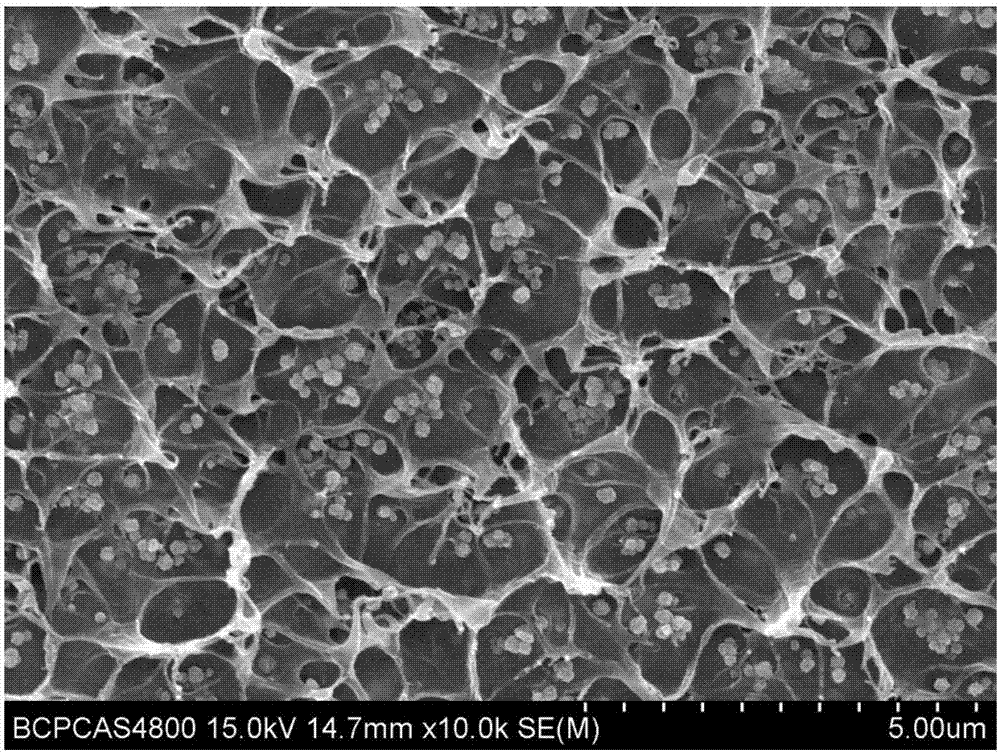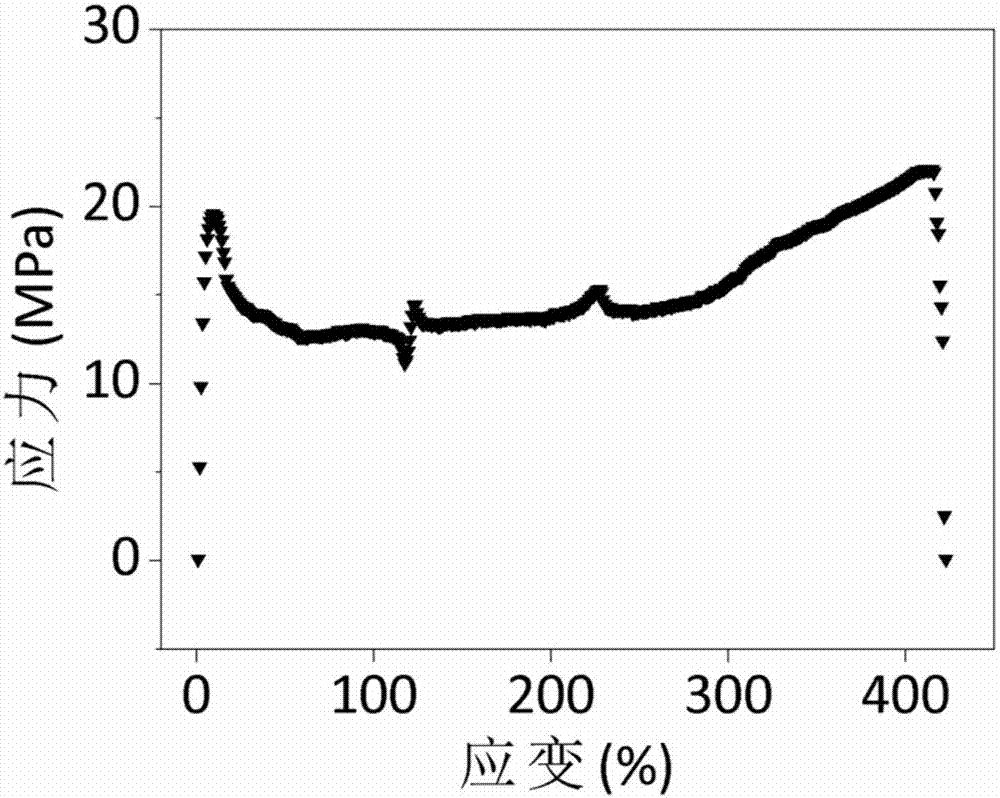Skull repairing anti-adhesion charged composite membrane and preparation method thereof
An anti-adhesion and composite film technology, which is applied in the field of repair materials for neurosurgery, achieves the effect of inducing skull repair performance, avoiding side effects, and improving osteoinductive activity
- Summary
- Abstract
- Description
- Claims
- Application Information
AI Technical Summary
Problems solved by technology
Method used
Image
Examples
Embodiment 1
[0027] (1) Take appropriate amount of BaTiO 3 Ceramic particles were dispersed in 5mL organic solvent DMF by ultrasonic oscillation, and ultrasonic oscillation was combined with stirring for 3 hours to obtain a ceramic particle dispersion;
[0028] (2) Weigh 1g of P(VDF-TrFE), add 5mL of organic solvent DMF, stir for 6h to dissolve completely, and obtain polymer P(VDF-TrFE) solution;
[0029] (3) Add the dispersion liquid obtained in step (1) to the polymer solution obtained in step (2), and stir for 10 h so that the ceramic particle filler is evenly dispersed in the polymer P(VDF-TrFE) matrix to obtain a mixed liquid;
[0030] (4) Casting the mixed solution obtained in step (3) in a casting machine, drying the obtained casting film at a temperature of 55° C. to completely volatilize the solvent to obtain a composite film material with a film thickness of 100 μm;
[0031] (5) The film material obtained in step (4) is subjected to polarization treatment, and the polarization p...
Embodiment 2
[0034] (1) Take an appropriate amount of potassium sodium niobate ceramic particles and disperse them in 5 mL of organic solvent DMF by ultrasonic oscillation, and use ultrasonic oscillation combined with stirring for 2 hours to obtain a ceramic particle dispersion;
[0035] (2) Weigh 1g of PVDF, add 5mL of organic solvent DMF, stir for 4h to dissolve completely, and obtain polymer PVDF solution;
[0036] (3) adding the dispersion obtained in step (1) to the polymer solution obtained in step (2), stirring for 8 hours so that the ceramic particle filler is evenly dispersed in the polymer PVDF matrix to obtain a mixed solution;
[0037] (4) Casting the mixed solution obtained in step (3) in a casting machine, drying the obtained casting film at a temperature of 60° C. to completely volatilize the solvent to obtain a composite film material with a film thickness of 80 μm;
[0038] (5) The membrane material obtained in step (4) is subjected to polarization treatment, and the polar...
Embodiment 3
[0041] (1) Take an appropriate amount of lithium niobate ceramic particles and disperse them in 5 mL of organic solvent DMF by ultrasonic oscillation, and use ultrasonic oscillation combined with stirring for 2 hours to obtain a ceramic particle dispersion;
[0042] (2) Weigh 1g of P(VDF-TrFE), add 5mL of organic solvent DMF, stir for 5h to completely dissolve, and obtain polymer P(VDF-TrFE) solution;
[0043] (3) Add the dispersion liquid obtained in step (1) to the polymer solution obtained in step (2), and stir for 8 hours so that the ceramic particle filler is evenly dispersed in the polymer P(VDF-TrFE) matrix to obtain a mixed liquid;
[0044] (4) Casting the mixed solution obtained in step (3) in a casting machine, drying the obtained casting film at a temperature of 45° C. to completely volatilize the solvent to obtain a composite film material with a film thickness of 60 μm;
[0045] (5) The membrane material obtained in step (4) is subjected to polarization treatment,...
PUM
| Property | Measurement | Unit |
|---|---|---|
| thickness | aaaaa | aaaaa |
| thickness | aaaaa | aaaaa |
| thickness | aaaaa | aaaaa |
Abstract
Description
Claims
Application Information
 Login to View More
Login to View More - R&D
- Intellectual Property
- Life Sciences
- Materials
- Tech Scout
- Unparalleled Data Quality
- Higher Quality Content
- 60% Fewer Hallucinations
Browse by: Latest US Patents, China's latest patents, Technical Efficacy Thesaurus, Application Domain, Technology Topic, Popular Technical Reports.
© 2025 PatSnap. All rights reserved.Legal|Privacy policy|Modern Slavery Act Transparency Statement|Sitemap|About US| Contact US: help@patsnap.com



